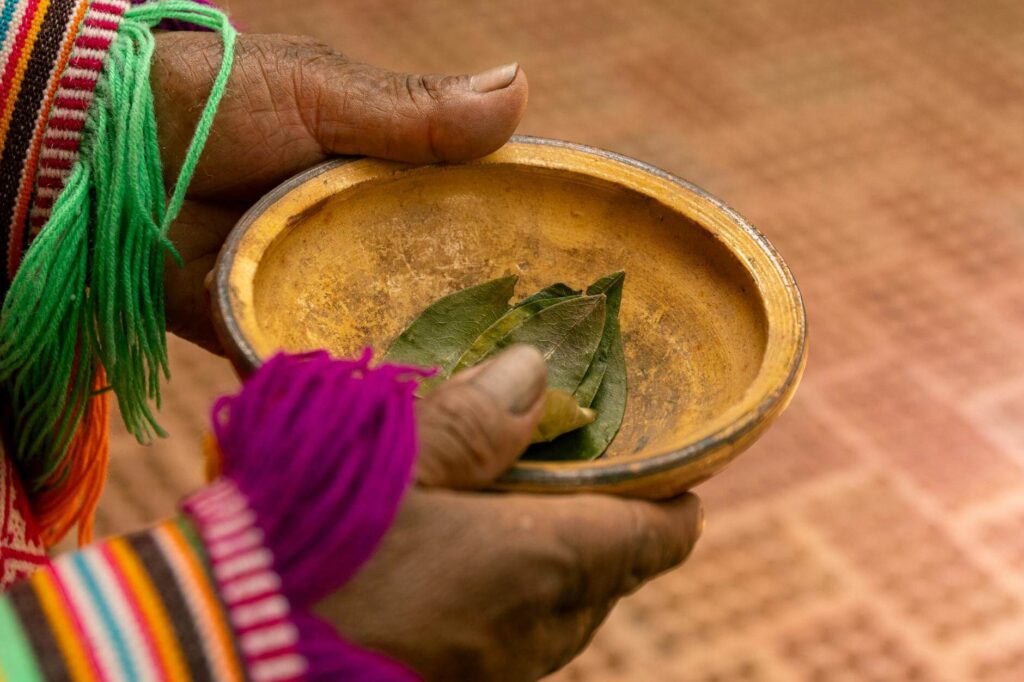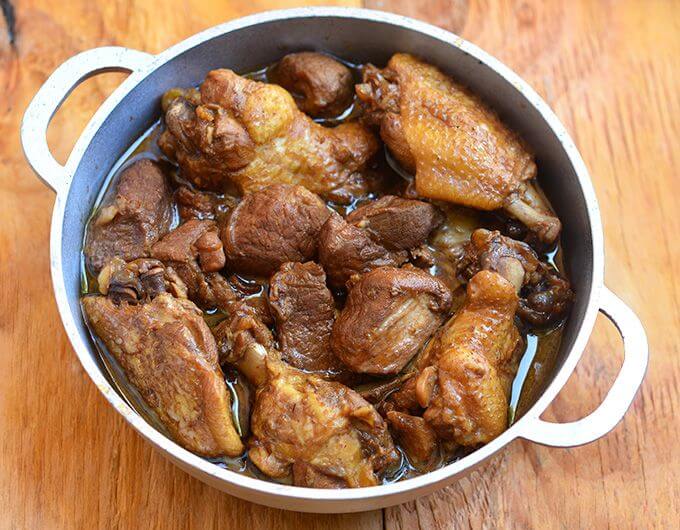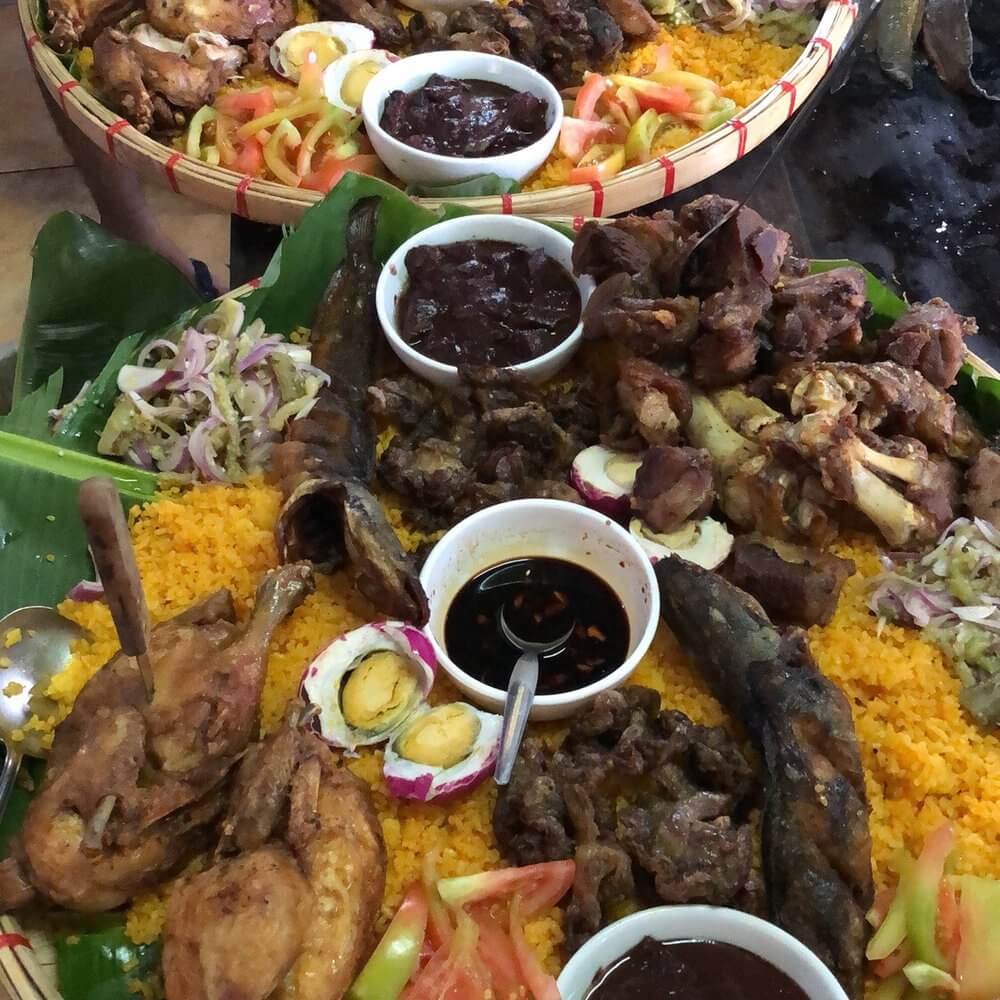Exploring Indigenous Filipino Ingredients
The richness of Filipino cuisine is deeply rooted in its indigenous ingredients. Coconut, banana, and taro root serve as the backbone of many traditional dishes, imparting unique flavors and textures that are unmistakably Filipino. These ingredients have been passed down through generations, ensuring that the culinary customs of the Philippines continue to thrive and evolve.
Coconut, Banana, and Taro Root in Filipino Cuisine
Coconut is not only a staple in Filipino cooking but also a source of various culinary components, including coconut milk and grated coconut. It adds richness and creaminess to dishes, enhancing their overall flavor profile.
Bananas, particularly the saba variety, are commonly used in both savory dishes and desserts. They can be fried, boiled, or included in sweet treats like banana cue, a popular street food snack.
Taro root, known for its starchy texture, is an essential ingredient in many traditional Filipino dishes, such as sinigang, where it is often cooked to creamy perfection in soups.
| Ingredient | Uses in Filipino Cuisine |
|---|---|
| Coconut | Coconut milk, grated coconut in dishes like ginataang |
| Banana | Fried (banana cue), boiled in stews |
| Taro Root | Added to soups like sinigang |
Filipino cuisine’s reliance on indigenous ingredients helps capture the essence of authentic Filipino dishes and reflects the rich culinary heritage of the Philippines.
Preserving Filipino Identity Through Ingredients
Indigenous ingredients play a vital role in preserving Filipino identity. The use of locally sourced ingredients not only enhances flavors but also fosters a sense of community and belonging. Filipino ancestors relied heavily on what the land and sea provided, showcasing communal living and sharing meals to strengthen bonds within the community.
The vibrant tastes of dishes made with ube, calamansi, and other native ingredients contribute to a unique culinary experience. For example, ube, a sweet purple yam, is widely used in Filipino desserts, while calamansi, a citrus fruit, adds a zesty kick to marinades and condiments.
Understanding and appreciating these indigenous ingredients is essential for anyone looking to explore the heart of traditional Filipino dishes and discover the flavors that define the nation’s cuisine. Through this exploration, one can indulge in the authentic tastes of Filipino food specialties, making every meal a celebration of cultural heritage. To dive deeper into the best Filipino regional cuisines, visit our guide on best Filipino regional cuisine.

Photo by Adobe Stock
Traditional Cooking Techniques
Filipino cuisine is enriched by traditional cooking methods that celebrate indigenous ingredients. The techniques, such as hinurno, boiling, steaming, and marinating, reflect the resourcefulness and creativity of Filipino culinary heritage.
Hinurno: The Art of Roasting
Hinurno is a traditional roasting method that brings a unique flavor to Filipino dishes. Often performed over an open fire, hinurno has been passed down through generations and remains popular today. This method is particularly known for recipes like lechon manok, or oven-baked chicken, which results in a tender and flavorful meal.
The roasting process allows the natural juices and flavors of the meat to intensify, creating a delightful experience for anyone who loves to eat. The art of hinurno highlights the appreciation for indigenous ingredients and the techniques that have shaped Filipino culinary traditions.
| Dish Example | Traditional Method |
|---|---|
| Lechon Manok | Roasting (Hinurno) |
| Pork Barbecue | Grilling |
| Tinola | Stewing |
For more information on traditional dishes made using these techniques, explore our article on traditional filipino dishes.
Boiling, Steaming, and Marinating Methods
The simplicity of boiling, steaming, and marinating in vinegar showcases the creativity and resourcefulness of indigenous Filipino cooking methods. These methods allow fresh ingredients to shine, preserving their natural flavors and nutrients.
Boiling and steaming are essential techniques for meals like lutong-bukit (vegetable stews) and various soups that highlight local vegetables and seafood. By employing these methods, cooks create dishes that are both satisfying and healthy, staying true to the region’s culinary heritage.
Marinating, particularly in vinegar, is another cornerstone of Filipino cuisine. It enhances the flavor profile of dishes, utilizing local ingredients such as vinegar and spices to create a harmonious blend of tastes. Shrimp paste, with its distinct umami flavor, plays a crucial role in many recipes and can be enjoyed with fried rice or in dishes like Bicol Express (Tasting Table).
| Technique | Description | Popular Dishes |
|---|---|---|
| Boiling | Cooking food in water at boiling point. | Sinigang, Tinola |
| Steaming | Cooking food with steam from boiling water. | Putong, Puto |
| Marinating | Soaking food in a seasoned liquid to enhance flavor. | Adobo, Bicol Express |
To discover more about Filipino culinary specialties using these techniques, check out our article on popular philippine food recipes.
Through these methods, traditional Filipino cooking not only preserves indigenous ingredients but also fosters a deeper understanding and appreciation of the country’s rich culinary history. For those eager to explore more about regional flavors, explore the best filipino regional cuisine.
Essential Indigenous Ingredients
Indigenous Filipino ingredients form the backbone of traditional Filipino cuisine, bringing unique flavors and textures to a variety of dishes. Among these, rice, fish, and coconut are undeniably essential, while ingredients like ube, shrimp paste, and calamansi contribute significantly to the culinary landscape.
Rice, Fish, and Coconut in Filipino Dishes
Rice is a staple in the Philippines and plays a crucial role in Filipino meals. It serves as the primary carbohydrate source and often accompanies many dishes, including the well-loved tocilog, a traditional breakfast that features sliced tocino (sweet cured pork), a sunnyside-up egg, and garlic fried rice Tasting Table.
Fish is another key ingredient, resonating with the archipelagic nature of the country. The abundance of fresh seafood allows for a diverse array of fish dishes that are rich in flavor. The use of coconut, found in various forms such as milk, cream, and grated, adds depth and richness to many meals. Indigenous Filipino ingredients like rice, fish, and coconut reflect the rich culinary heritage of the Philippines and are essential in creating authentic dishes (Amazing Food & Drink).
| Ingredient | Culinary Use |
|---|---|
| Rice | Staple grain, served with most meals |
| Fish | Forms the basis of many seafood dishes |
| Coconut | Used in soups, desserts, and as a cooking base |
Culinary Importance of Ube, Shrimp Paste, and Calamansi
Ube, a vibrant purple yam, is widely appreciated for its sweet and nutty flavor. It is often featured in desserts such as ube halaya (a custard made with coconut milk, butter, and sugar) and ube ice cream, especially in the popular layered dessert, halo-halo.
Shrimp paste, known locally as bagoong, is a fermented condiment that adds a savory umami flavor to various dishes. It is often incorporated into vegetable dishes and stews, enhancing the overall taste profile.
Calamansi, also referred to as calamondin or Philippine lime, is a beloved citrus fruit used abundantly in Filipino cooking. Its bright and acidic flavor is commonly used in marinades, sauces, and is served as a finishing touch on dishes such as bistek tagalog (Tasting Table).
| Ingredient | Culinary Use |
|---|---|
| Ube | Used in desserts; adds natural sweetness and color |
| Shrimp Paste | Enhances stews and vegetable dishes with umami |
| Calamansi | Used in marinades and as a condiment to add flavor |
Indigenous Filipino ingredients not only contribute to the taste of dishes but also play a significant role in the cultural identity and heritage of the Philippines. For more insights into traditional Filipino cooking, explore our articles on traditional filipino dishes and filipino food specialties.
Indigenous Ingredients Conservation
The conservation of indigenous ingredients in the Philippines faces several challenges. With modern influences permeating traditional practices, it is crucial to understand both the hurdles and preservation efforts in place.
Challenges and Preservation Efforts
One prominent challenge in conserving indigenous Filipino ingredients is the decline in the cultivation of certain crops. For instance, the harvesting of Kabog millet has significantly decreased, with only about 2.5 metric tonnes harvested each season by at least 50 farmers in Cebu. This decline has driven the crop to near extinction due to lack of promotion and a preference for more high-yielding varieties.
Additionally, unique native ingredients like Asin Tibuok, a traditional salt from Bohol known for its distinct taste, are becoming rare as fewer salt farmers continue traditional production processes (Behold Philippines). Preservation efforts have focused on raising awareness of these ingredients’ cultural significance and supporting local farmers in sustainable practices.
| Ingredient | Current Status | Conservation Efforts |
|---|---|---|
| Kabog Millet | Near extinction due to decline in cultivation. | Promotion of traditional farming practices. |
| Asin Tibuok | Declining production; fewer farmers involved. | Support local salt farmers and encourage traditional methods. |
Impact of Modernization on Native Ingredients
Modernization has had a dual impact on native ingredients. On one side, it has introduced new culinary trends, appealing to the younger population and diversifying the Filipino palate. However, it frequently comes at the expense of traditional practices and the use of indigenous ingredients.
Many communities are shifting towards processed foods, which may lack the rich flavors of native crops. This not only threatens the biodiversity of Filipino ingredients but also affects the identity of traditional cuisines. Indigenous ingredients like rice, fish, and coconut—which capture the essence of recipes representative of Filipino culture—are essential in traditional Filipino cuisine and reflect the rich culinary heritage of the Philippines (Amazing Food & Drink).
Efforts to counterbalance these trends have emerged, such as making traditional dishes more accessible through popular Philippine food recipes and emphasizing their cultural importance. Advocating for the preservation of ingredients while incorporating modern techniques allows for a celebration of Filipino food specialties without losing sight of its roots.
By understanding the challenges and impacts of modernization, individuals can help promote the importance of indigenous Filipino ingredients. Supporting local farmers and enjoying traditional dishes are vital steps in promoting and preserving the culinary heritage of the Philippines. For those still exploring the diversity of Filipino cuisine, consider diving deeper into our comprehensive guide on best Filipino regional cuisine.
Share this post: on Twitter on Facebook



